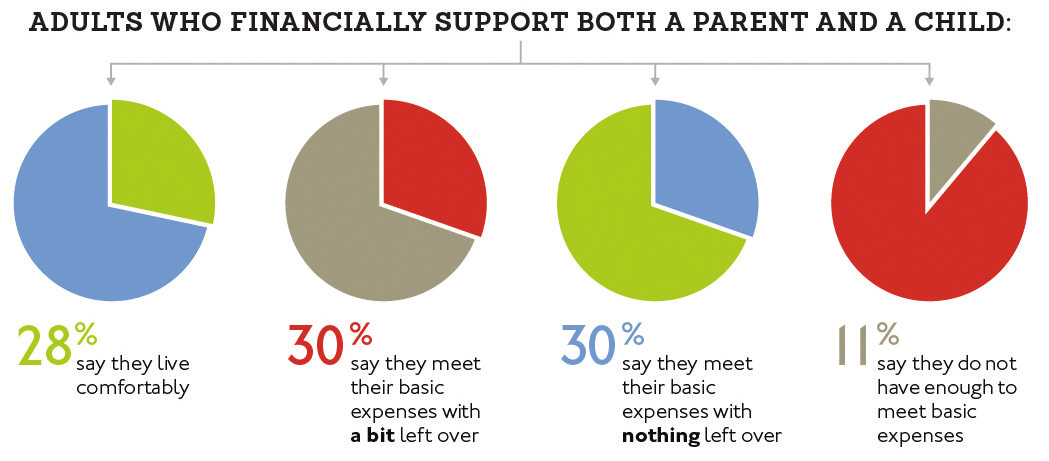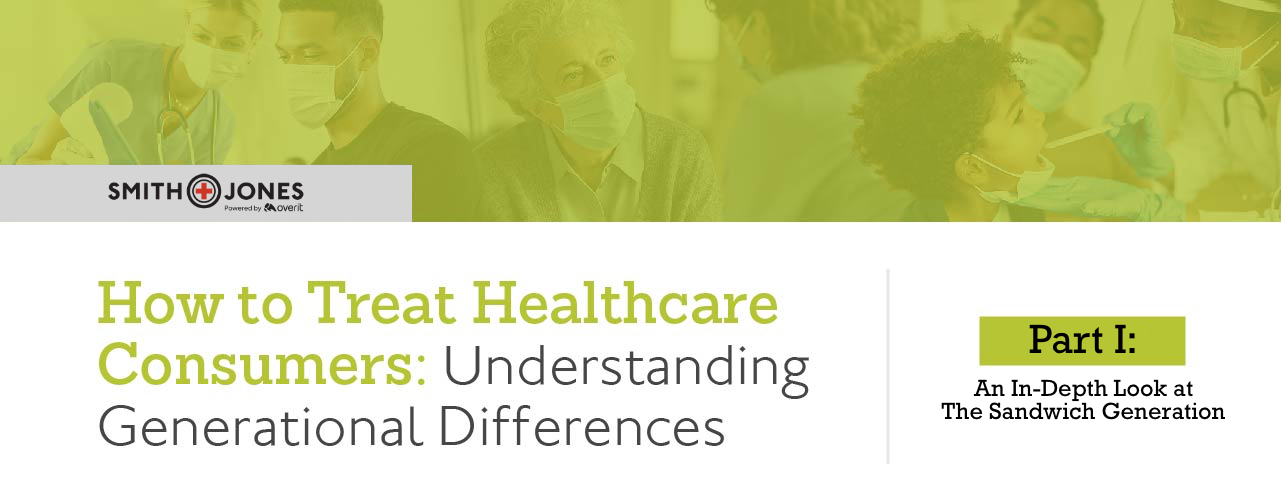How to Treat Healthcare Consumers – Part I
Prefer video to text? Check out our video on this topic below.
“If your audience isn’t listening, it’s not their fault. It’s yours.” — Seth Godin, entrepreneur, author, marketer and public speaker
In April of 2017, in what will probably go down as one of the top-five marketing blunders of all time, Pepsi released a commercial starring Kendall Jenner. The commercial was reminiscent of the Black Lives Matter movement or the Women’s March on Washington. Except, the crowds were smiling, people were cheering, and Kendall Jenner “saved the day” by offering a police officer a can of Pepsi.
The term “tone deaf ” was commonly used to describe the commercial. Pepsi pulled the ad in a flash after a storm of Twitter users blew up their spot. I can’t help but cringe when I think of what a muck-up the entire campaign was. What were they thinking? How could they be so out of touch with reality?
We have to do better. As hospital marketers, we have to strive to be more in tune with our audiences. Today, people in need of healthcare have more options, more information and more at stake when they make decisions. The way healthcare consumers choose their provider is evolving. It changes based on the habits and behaviors of each new generation.
It’s our duty to analyze these segments and figure out what motivates them to interact with our brands. We can’t stereotype, create tropes or put people in a box. We have to do a better job at getting to know our customers.
An In-Depth Look at The Sandwich Generation
Adults 40-59 may be the most powerful healthcare consumer group. Members of, “the sandwich generation” are defined as adults who are caring for a parent age 65 or older and are either raising a child under the age of 18, or supporting a child over the age of 18. According to a study from Pew Research Center, 71% of the people in the US who fit this criteria are between the ages of 40-59, falling into Gen X and the Baby Boomers – and soon, older Millennials.
When we look past the stats, the reality of the sandwich generation is that these adults are pulled in many different directions. This position requires caregiving, financial and emotional support for both their parents and their children. This also means that members of this generation are likely making healthcare decisions for their parents, their children and themselves. We are going to take an in-depth look at who makes up the sandwich generation and the best ways to reach them as the primary healthcare decision-makers for their families.
Profile of the sandwich generation
The Pew Research Center study, The Sandwich Generation: Rising Financial Burdens for Middle-Aged Americans, found that 42% of Gen X-ers and 33% of Baby Boomers are members of this sandwich generation. Outside of age, the study found that Hispanics are more likely to be members of the sandwich generation. According to the study, 31% of Hispanic adults have a parent age 65 or older and a dependent child, whereas 24% of whites and 21% of blacks fit this criteria.
In addition, the study found that affluent adults with annual household incomes of $100,000 or more are more likely to be members of the sandwich generation than less affluent adults. A typical member of the sandwich generation probably looks like this: Kathy Jones is a 45-year-old woman who works as a nurse at a local hospital. Her husband, Karl Jones, is a sales manager and they have three kids: one 13-year-old son, one 16-year-old daughter, and one 18-year-old son in his freshman year of college whom they still support financially and emotionally – especially when he is home on school breaks. Recently, Karl’s father passed away, leaving his mother alone in her house, which requires a lot of maintenance. Also, Kathy’s mother fell and broke her hip and she is now transitioning her to a nursing home. In between the paperwork, home repairs and medical bills, Kathy and her husband are driving their 13-year-old son to lacrosse practice and helping their 16-year-old daughter start the college application process. They barely have any time for themselves, yet they are happy and value their relationships with their family.
A second study conducted by Pew Research Center, Family Support in Graying Societies, found that despite the stress caused by the financial and emotional strain on this generation, they are as likely as other adults to label themselves as happy. They have high levels of satisfaction with the quality of their family life, social life and community.
Providing financial support to parents and children
Members of the sandwich generation are often tasked with supporting their parents and children financially. One in seven middle-aged adults (ages 40-59), or 15%, are providing financial support to both an aging parent and a child.
Financial support of either family group is typically ongoing, rather than a one-time situation. Of all adults with a parent age 65 or older, 32% have given financial support to a parent in the past year, and of that 32%, 72% said that the money was for ongoing expenses. These expenses can include house maintenance and living (food, medication, personal care), hospital bills, nursing home costs or in-home care.
Similarly, members of the sandwich generation are making ongoing financial contributions to their grown children (over the age of 18), although this is often attributed to college expenses. Of middle-aged adults, 73% said they provided financial support to a grown child within the past year. Of this 73%, more than half said they are the primary source of financial support for their grown child, and 62% of these parents say this is because their child is enrolled in school. These expenses may include college tuition, groceries/meal plans, room and board.
Providing financial support to parents and grown children can create financial strain for members of the sandwich generation. Of adults who are financially supporting both a parent and child of any age, 28% say they live comfortably, 30% say they have enough to meet their basic expenses with a little leftover for extras, 30% say they are just able to meet their basic expenses and 11% say they don’t have enough to meet even basic expenses. This may contribute to the growth of healthcare consumers searching for the best value while making healthcare decisions for themselves, their parents and their children.

Source of caregiving and emotional support
Money is just one piece of the sandwich generation’s responsibility to their parents and children. Many adults 40-59 also cite providing emotional support and caregiving. Of adults with at least one parent age 65 or older, 30% say their parents need help caring for themselves or their affairs. In the US, 58% of adults have assisted an aging parent with errands, housework or home repairs in the last year, whereas just 14% have helped a parent with personal care, such as bathing or getting dressed.
If the adult isn’t providing this type of support personally, they are likely hiring professionals to help out, especially if they work full time. Among middle-aged members of the sandwich generation with a parent who needs care, 29% say they are providing the care, 38% say another family member is providing the care, and 15% say they pay professionals to provide care. Professionals may include a nursing home, at-home care, or visiting nurses.
This type of support isn’t only limited to aging parents. On the flip side, 39% of adults with a grown child have helped their children with errands, housework or home repairs, and 33% have helped with child care. In addition, 33% of adults with at least one grown child say their grown child depends on them frequently for emotional support. These different types of support could come in the form of babysitting, giving advice or simply serving as a shoulder to cry on.
Of the members of the sandwich generation between the ages of 40-59, 55% say they provide emotional support to both their aging parents and their grown children.
How to reach the sandwich generation
If there’s one main takeaway from the statistics on the sandwich generation, it’s that they’re a busy group of people. They are caring for their children and their parents, providing financial and emotional support, and are often pressed for time. This makes digital marketing the best way to reach this on-the-go population.
While digital content is often pegged for Millennials, a recent study conducted by Fractl and Buzzstream found that Baby Boomers consume 20 or more hours of content each week. Here are some other interesting statistics from this study:
- The most popular time for members of Gen X to consume online content is 8:00pm to midnight
- The most popular time for Baby Boomers to consume online content is from 9:00am to noon
- Baby Boomers and Gen X-ers prefer to consume online content on laptops and desktop computers, opposed to mobile and tablet devices
- The top 5 types of online content Gen X-ers prefer are: blog articles, images, comments, ebooks and case studies
- The top 5 types of online content Baby Boomers prefer are: blog articles, images, comments, ebooks and reviews
- Baby boomers and Gen X-ers agree that 300 words is the preferred article length
- Baby boomers and Gen X-ers mostly use Facebook to share content, versus other social platforms
Many members of the sandwich generation are at a loss when it comes to filing the correct paperwork and finding the best solutions for their aging parents. Due to financial strain, they are also likely shopping around for the best value or alternatives to expensive emergency room visits. Any way your healthcare organization can provide content to help make this process easier performs well with the sandwich generation. They are likely searching for information on these topics, and publishing high-quality content related to their queries will boost your organic rankings on SERPS. It’s also important to express empathy in your hospital’s content marketing to show these generations that you understand what they’re going through.
Another way to reach this busy generation is through television. A recent study conducted by Turner Broadcasting, Horizon Media and MarketShare found that TV remains the most effective advertising medium in terms of conversions. Compared to a similar spending level in digital channels, such as display and search, television advertising delivered four times the amount of sales. The study also found that over the last five years, the effectiveness of TV only decreased by 1.5%, whereas the effectiveness of other advertising media decreased more than 10%.
This isn’t to say that digital isn’t worth running, but when partnered with television, your marketing will be more effective. A solid digital content strategy paired with TV advertising is the best way to reach the sandwich generation.
Stuck in the middle
The important thing to note about the sandwich generation is that although they are extremely busy, they’re happy. They enjoy helping their family members and finding them the best care. They don’t view this responsibility as a burden, but rather a chance to build stronger relationships with their families. This means that these 40-59-year-olds will be receptive to quality healthcare information – for their parents, their children and themselves – especially when it is related to value, quality of care and the simplification of otherwise complicated care processes.
Using a combination of quality digital content and TV advertising will both position your hospital as a helper and keep it top of mind. If your hospital can deliver positive patient experiences, word-of-mouth referrals will ensure through the sandwich generation’s tight network of friends, family and community.

